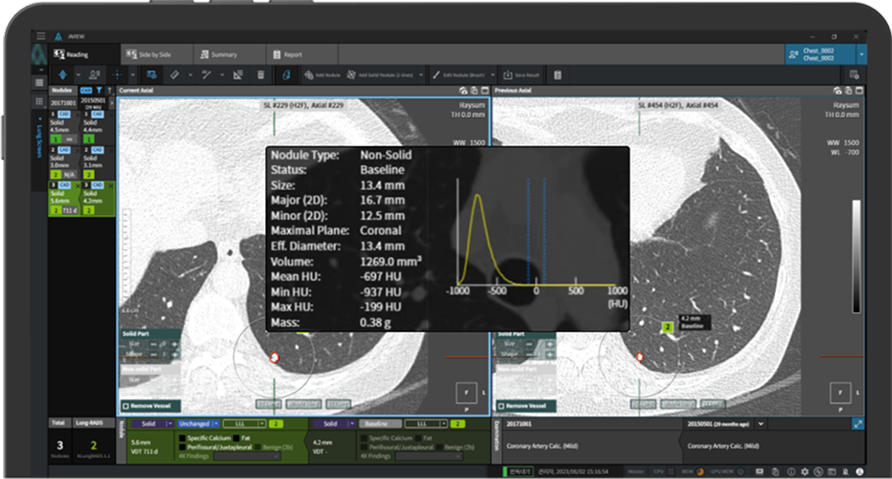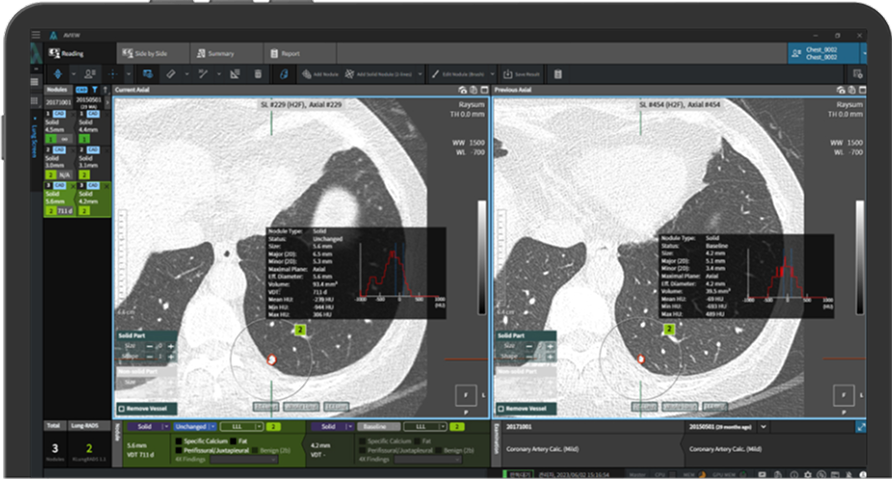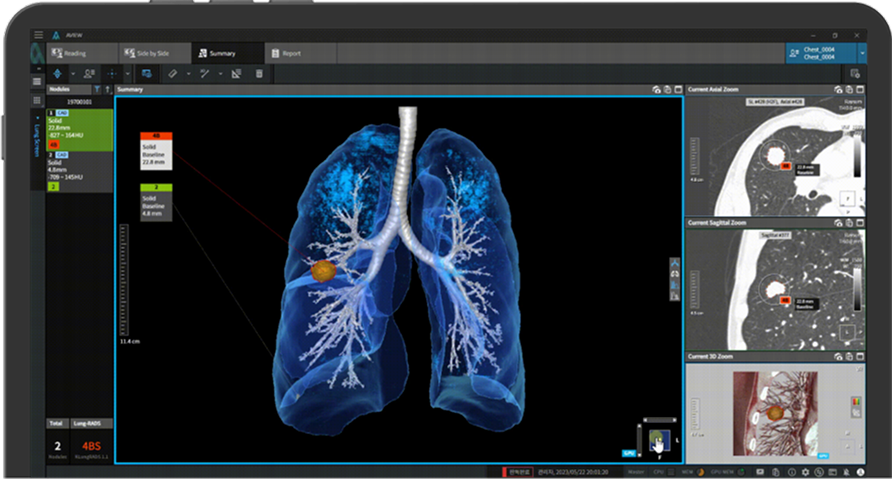Efficiently diagnose with awareness of patient conditions.
Finding microscopic nodules provides a variety of information, including basic, number of nodules, size and status, and RADS category. Findings that are likely to develop into lung cancer can also be checked in advance, reducing working time and allowing efficient reading depending on the case. Microscopic Nodule Detection: Providing Comprehensive Information on Number of Nodules, Size, Status, and RADS Category Early Detection of Potential Lung Cancer Development Enables Time-efficient Scans Reading.

Monitoring Nodule Growth is Vital for Accurate Readings.
It autonomously assesses growth and changes by matching lung nodules, going beyond mere image comparisons.aview LCS efficiently classifies lung nodules into the relevant categories according to the Lung CT Screening Reporting and Data System (Lung-RADS ver 1.1) guidelines as recommended by the American College of Radiology.

Advanced 3D Rendering of Patient’s Lung.
2D Images May Not Provide Adequate Information of Abnormal Findings Visualized 3D Model of Patient’s Lung is much more informative and intuitive. Abnormal findings can be easily explained by demonstration of the 3D Model.

Automate Tedious manual Tasks to Save Time.
Time Saving
Sensitivity
False positivity rate
Reduce Workload
https://dailybulletin.rsna.org/db22/index.cfm?pg=22fri07
Lancaster HL, Zheng S, Aleshina OO, Yu D, Yu Chernina V, Heuvelmans MA, de Bock GH, Dorrius MD, Willem Gratama J, Morozov SP, Gombolevskiy VA, Silva M, Yi J, Oudkerk M. Outstanding negative prediction performance of solid pulmonary nodule volume AI for ultra-LDCT baseline lung cancer screening risk stratification. Lung Cancer. 2022 Jan 6;165:133-140